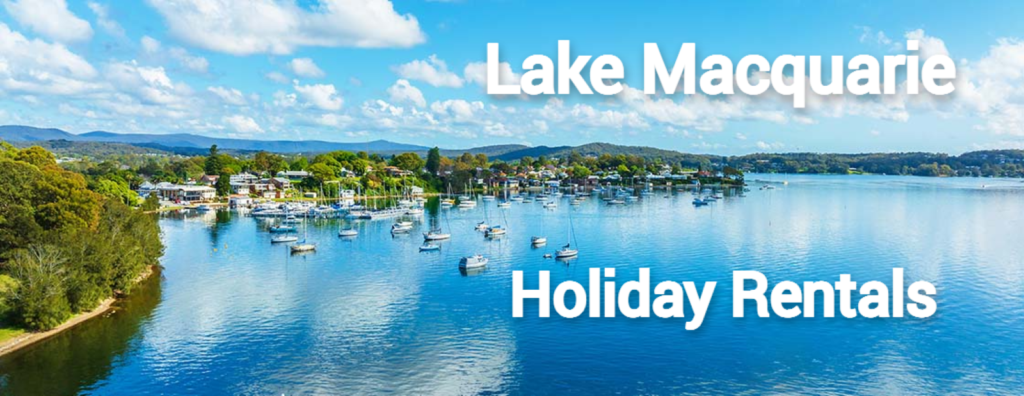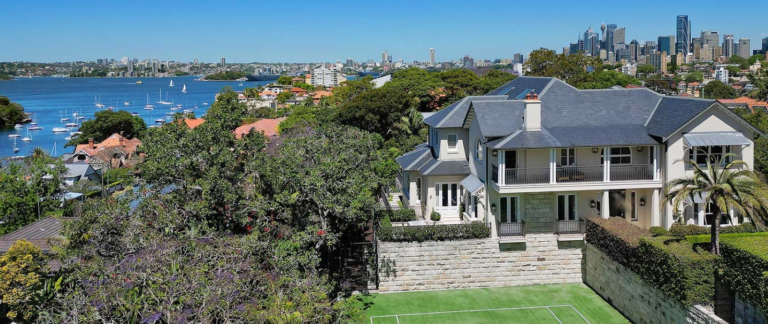Investment Lake Macquarie – Guide To Actually Be Profitable
Investment Lake Macquarie – Guide To Actually Be Profitable
Property Investment Lake Macquarie is a standout way to make a profit. With its stunning natural scenery, growing population, and proximity to Sydney, it offers the perfect blend of lifestyle and opportunity. Investors are increasingly drawn to its potential for capital growth, solid rental yields, and long-term returns.
Understanding the property market before making investment decisions is paramount. Lake Macquarie’s suburbs each present unique opportunities, and knowing which areas deliver the best returns can make all the difference. By analyzing five years of data from RP Data and other credible sources, this guide breaks down the top 10 suburbs for investing, focusing on property price growth, rental yields, and ROI.
Key Factors to Consider When Investing in Lake Macquarie
Lake Macquarie’s property market has shown consistent growth, but not all suburbs perform the same. Knowing the right factors to focus on can help maximize returns. Here are key points to consider before investing:
1. Property Price Growth
Steady growth in property prices indicates long-term demand and economic health. Suburbs with infrastructure upgrades or lifestyle amenities often see faster appreciation. Reviewing historical trends over the past five years can reveal which areas offer consistent value increases.
2. Rental Yields and Demand
Strong rental demand often reflects a suburb’s appeal. Lake Macquarie suburbs near schools, beaches, or transport hubs tend to attract tenants quickly. High rental yields, calculated as the percentage of rental income relative to the property’s value, can ensure steady cash flow for investors.
3. Proximity to Infrastructure and Amenities
Access to transport, schools, shops, and leisure facilities drives property appeal. Suburbs near the upcoming Lake Macquarie Transport Interchange or with waterfront access are particularly attractive for both buyers and renters.
4. Long-Term Community Growth
Population increases or new developments often drive up property demand. Areas with planned housing developments, new schools, or shopping centers tend to experience higher growth rates over time.
5. Balance Between Capital Growth and Rental Income
Investors must decide whether their focus is on increasing property value (capital growth) or steady rental returns. Suburbs offering a mix of both create a well-rounded investment portfolio.
6. Local Market Trends and Insights
Understanding the suburb’s median house prices, auction clearance rates, and buyer demand gives a clearer picture of its market position. Lake Macquarie’s diverse suburbs cater to a range of buyers, from families to retirees, offering something for every type of investor.

5 Year Property Investment Overview Of Lake Macquarie
1. Warners Bay
Key Highlights
Warners Bay is a picturesque lakeside suburb with a strong community vibe. It’s known for its vibrant café scene, waterfront walking tracks, and appeal to families and professionals. With excellent schools, parks, and proximity to Newcastle, it continues to attract high demand from both buyers and renters.
Property Price Trends (2019–2024)
- December 2019: $625,000 (base price).
- December 2020: $660,000 (+5.6%).
- December 2021: $690,000 (+4.5%).
- December 2022: $725,000 (+5.1%).
- December 2023: $775,000 (+6.9%).
- December 2024: $910,000 (+17.4%).
Total Growth (2019–2024): +$285,000 (+45.6%).
Average Annual Growth Rate (2019–2024): 7.8%.
Rental Yields and Income (2019–2024)
- Median Rent December 2019: $450/week.
Yield: 3.7%.
Annual Rental Income (2019): $23,400. - Median Rent December 2020: $475/week.
Yield: 3.8%.
Annual Rental Income (2020): $24,700. - Median Rent December 2021: $500/week.
Yield: 3.8%.
Annual Rental Income (2021): $26,000. - Median Rent December 2022: $530/week.
Yield: 3.9%.
Annual Rental Income (2022): $27,560. - Median Rent December 2023: $570/week.
Yield: 3.8%.
Annual Rental Income (2023): $29,640. - Median Rent December 2024: $600/week.
Yield: 3.4%.
Annual Rental Income (2024): $31,200.
Total Rental Income (2019–2024): $162,500.
Average Yield (2019–2024): 3.7%.
ROI Example (2019–2024) Warners Bay
- Capital Gain: $285,000 (+45.6%).
- Total Rental Income: $162,500 (+26% of purchase price).
- Total ROI (Capital Gain + Rental Income): $447,500 (+71.6%).
Why Invest
Warners Bay combines lifestyle and growth potential. Its lakeside charm, excellent amenities, and steady capital growth make it a standout choice. Strong rental demand ensures consistent cash flow, while its proximity to infrastructure and schools adds to its appeal for families and professionals.
2. Belmont
Key Highlights
Belmont offers a relaxed lakeside lifestyle with marinas, fishing spots, and proximity to Redhead Beach. Its mix of family homes, retirement living, and development potential makes it attractive to diverse buyers. With ongoing demand for rental properties and lifestyle appeal, Belmont continues to thrive as an investment hotspot.
Property Price Trends (2019–2024)
- December 2019: $550,000 (base price).
- December 2020: $582,000 (+5.8%).
- December 2021: $610,000 (+4.8%).
- December 2022: $645,000 (+5.7%).
- December 2023: $700,000 (+8.5%).
- December 2024: $840,000 (+20.0%).
Total Growth (2019–2024): +$290,000 (+52.7%).
Average Annual Growth Rate (2019–2024): 8.8%.
Rental Yields and Income (2019–2024)
- Median Rent December 2019: $420/week.
Yield: 4.0%.
Annual Rental Income (2019): $21,840. - Median Rent December 2020: $440/week.
Yield: 4.0%.
Annual Rental Income (2020): $22,880. - Median Rent December 2021: $460/week.
Yield: 3.9%.
Annual Rental Income (2021): $23,920. - Median Rent December 2022: $480/week.
Yield: 3.9%.
Annual Rental Income (2022): $24,960. - Median Rent December 2023: $510/week.
Yield: 3.8%.
Annual Rental Income (2023): $26,520. - Median Rent December 2024: $560/week.
Yield: 3.5%.
Annual Rental Income (2024): $29,120.
Total Rental Income (2019–2024): $149,240.
Average Yield (2019–2024): 3.8%.
ROI Example (2019–2024)
- Capital Gain: $290,000 (+52.7%).
- Total Rental Income: $149,240 (+27.1% of purchase price).
- Total ROI (Capital Gain + Rental Income): $439,240 (+79.8%).
Why Invest
Belmont’s waterfront access and easy connection to Newcastle make it a solid investment choice. Its mix of affordability and lifestyle appeal drives strong demand for both homebuyers and tenants.
3. Valentine
Key Highlights
Valentine is a premium lakeside suburb known for its exclusivity and scenic beauty. Its family-friendly environment, high-performing schools, and strong community vibe make it highly desirable. Investors benefit from steady demand and capital growth, making it a standout suburb for long-term gains.
Property Price Trends (2019–2024)
- December 2019: $775,000 (base price).
- December 2020: $815,000 (+5.2%).
- December 2021: $855,000 (+4.9%).
- December 2022: $900,000 (+5.3%).
- December 2023: $975,000 (+8.3%).
- December 2024: $1,150,000 (+17.9%).
Total Growth (2019–2024): +$375,000 (+48.4%).
Average Annual Growth Rate (2019–2024): 8.1%.
Rental Yields and Income (2019–2024)
- Median Rent December 2019: $580/week.
Yield: 3.9%.
Annual Rental Income (2019): $30,160. - Median Rent December 2020: $610/week.
Yield: 3.9%.
Annual Rental Income (2020): $31,720. - Median Rent December 2021: $630/week.
Yield: 3.8%.
Annual Rental Income (2021): $32,760. - Median Rent December 2022: $660/week.
Yield: 3.7%.
Annual Rental Income (2022): $34,320. - Median Rent December 2023: $700/week.
Yield: 3.7%.
Annual Rental Income (2023): $36,400. - Median Rent December 2024: $750/week.
Yield: 3.4%.
Annual Rental Income (2024): $39,000.
Total Rental Income (2019–2024): $204,360.
Average Yield (2019–2024): 3.7%.
ROI Example (2019–2024)
- Capital Gain: $375,000 (+48.4%).
- Total Rental Income: $204,360 (+26.3% of purchase price).
- Total ROI (Capital Gain + Rental Income): $579,360 (+74.7%).
Why Invest
Valentine offers a combination of prestige and long-term value growth. Its strong rental demand and exclusivity make it an excellent choice for investors focused on high-value, low-risk properties.
4. Eleebana
Key Highlights
Eleebana is a quiet lakeside suburb with large family homes, leafy streets, and proximity to parks and schools. Its growing reputation as a safe and community-driven area has led to a steady increase in property demand, particularly among families and retirees.
Property Price Trends (2019–2024)
- December 2019: $680,000 (base price).
- December 2020: $720,000 (+5.9%).
- December 2021: $760,000 (+5.6%).
- December 2022: $795,000 (+4.6%).
- December 2023: $855,000 (+7.5%).
- December 2024: $1,000,000 (+17.0%).
Total Growth (2019–2024): +$320,000 (+47.1%).
Average Annual Growth Rate (2019–2024): 7.9%.
Rental Yields and Income (2019–2024)
- Median Rent December 2019: $500/week.
Yield: 3.8%.
Annual Rental Income (2019): $26,000. - Median Rent December 2020: $520/week.
Yield: 3.7%.
Annual Rental Income (2020): $27,040. - Median Rent December 2021: $540/week.
Yield: 3.7%.
Annual Rental Income (2021): $28,080. - Median Rent December 2022: $560/week.
Yield: 3.6%.
Annual Rental Income (2022): $29,120. - Median Rent December 2023: $590/week.
Yield: 3.6%.
Annual Rental Income (2023): $30,680. - Median Rent December 2024: $630/week.
Yield: 3.3%.
Annual Rental Income (2024): $32,760.
Total Rental Income (2019–2024): $173,680.
Average Yield (2019–2024): 3.6%.
ROI Example (2019–2024)
- Capital Gain: $320,000 (+47.1%).
- Total Rental Income: $173,680 (+25.5% of purchase price).
- Total ROI (Capital Gain + Rental Income): $493,680 (+72.6%).
Why Invest
Eleebana’s family-friendly appeal and steady property growth make it a low-risk, high-reward investment. Its rental market remains strong, supported by its safe and peaceful atmosphere.

5. Caves Beach
Key Highlights
Caves Beach is renowned for its stunning coastal lifestyle, with a mix of holiday homes, permanent residences, and development potential. The area offers beachside tranquility combined with excellent local amenities, making it a hotspot for lifestyle investors and families seeking seaside living.
Property Price Trends (2019–2024)
- December 2019: $610,000 (base price).
- December 2020: $645,000 (+5.7%).
- December 2021: $670,000 (+3.9%).
- December 2022: $700,000 (+4.5%).
- December 2023: $770,000 (+10.0%).
- December 2024: $930,000 (+20.8%).
Total Growth (2019–2024): +$320,000 (+52.5%).
Average Annual Growth Rate (2019–2024): 8.8%.
Rental Yields and Income (2019–2024)
- Median Rent December 2019: $450/week.
Yield: 3.8%.
Annual Rental Income (2019): $23,400. - Median Rent December 2020: $470/week.
Yield: 3.8%.
Annual Rental Income (2020): $24,440. - Median Rent December 2021: $500/week.
Yield: 3.9%.
Annual Rental Income (2021): $26,000. - Median Rent December 2022: $530/week.
Yield: 3.8%.
Annual Rental Income (2022): $27,560. - Median Rent December 2023: $570/week.
Yield: 3.8%.
Annual Rental Income (2023): $29,640. - Median Rent December 2024: $620/week.
Yield: 3.5%.
Annual Rental Income (2024): $32,240.
Total Rental Income (2019–2024): $163,280.
Average Yield (2019–2024): 3.7%.
ROI Example (2019–2024)
- Capital Gain: $320,000 (+52.5%).
- Total Rental Income: $163,280 (+26.8% of purchase price).
- Total ROI (Capital Gain + Rental Income): $483,280 (+79.3%).
Why Invest
Caves Beach offers a unique mix of lifestyle appeal and investment growth. The area’s coastal charm continues to attract families, retirees, and vacationers, ensuring strong demand for rental properties and long-term capital gains.
6. Charlestown
Key Highlights
Charlestown is a bustling commercial and residential hub in Lake Macquarie. Known for its proximity to Charlestown Square and major transport routes, the suburb offers a mix of affordability and convenience. Its central location attracts both renters and buyers looking for a vibrant lifestyle.
Property Price Trends (2019–2024)
- December 2019: $570,000 (base price).
- December 2020: $600,000 (+5.3%).
- December 2021: $630,000 (+5.0%).
- December 2022: $670,000 (+6.3%).
- December 2023: $730,000 (+9.0%).
- December 2024: $850,000 (+16.4%).
Total Growth (2019–2024): +$280,000 (+49.1%).
Average Annual Growth Rate (2019–2024): 8.2%.
Rental Yields and Income (2019–2024)
- Median Rent December 2019: $430/week.
Yield: 3.9%.
Annual Rental Income (2019): $22,360. - Median Rent December 2020: $450/week.
Yield: 3.9%.
Annual Rental Income (2020): $23,400. - Median Rent December 2021: $480/week.
Yield: 3.9%.
Annual Rental Income (2021): $24,960. - Median Rent December 2022: $510/week.
Yield: 3.8%.
Annual Rental Income (2022): $26,520. - Median Rent December 2023: $550/week.
Yield: 3.8%.
Annual Rental Income (2023): $28,600. - Median Rent December 2024: $580/week.
Yield: 3.5%.
Annual Rental Income (2024): $30,160.
Total Rental Income (2019–2024): $156,000.
Average Yield (2019–2024): 3.8%.
ROI Example (2019–2024)
- Capital Gain: $280,000 (+49.1%).
- Total Rental Income: $156,000 (+27.4% of purchase price).
- Total ROI (Capital Gain + Rental Income): $436,000 (+76.5%).
Why Invest
Charlestown’s combination of affordability and accessibility makes it a standout suburb for both rental income and long-term growth. Its strong commercial presence and community amenities ensure high demand.
7. Toronto
Key Highlights
Toronto is a charming lakeside suburb offering a mix of affordability and lifestyle. Known for its waterfront views, marinas, and relaxed vibe, it attracts families, retirees, and professionals alike. Its ongoing growth and rental demand make it a solid choice for investors.
Property Price Trends (2019–2024)
- December 2019: $520,000 (base price).
- December 2020: $555,000 (+6.7%).
- December 2021: $580,000 (+4.5%).
- December 2022: $620,000 (+6.9%).
- December 2023: $680,000 (+9.7%).
- December 2024: $810,000 (+19.1%).
Total Growth (2019–2024): +$290,000 (+55.8%).
Average Annual Growth Rate (2019–2024): 9.3%.
Rental Yields and Income (2019–2024)
- Median Rent December 2019: $400/week.
Yield: 4.0%.
Annual Rental Income (2019): $20,800. - Median Rent December 2020: $420/week.
Yield: 4.0%.
Annual Rental Income (2020): $21,840. - Median Rent December 2021: $440/week.
Yield: 3.9%.
Annual Rental Income (2021): $22,880. - Median Rent December 2022: $460/week.
Yield: 3.9%.
Annual Rental Income (2022): $23,920. - Median Rent December 2023: $490/week.
Yield: 3.8%.
Annual Rental Income (2023): $25,480. - Median Rent December 2024: $520/week.
Yield: 3.3%.
Annual Rental Income (2024): $27,040.
Total Rental Income (2019–2024): $142,960.
Average Yield (2019–2024): 3.8%.
ROI Example (2019–2024)
- Capital Gain: $290,000 (+55.8%).
- Total Rental Income: $142,960 (+27.5% of purchase price).
- Total ROI (Capital Gain + Rental Income): $432,960 (+83.3%).
Why Invest
Toronto’s waterfront appeal, combined with affordability, makes it a strong contender for investors. The area’s development and steady rental demand ensure reliable returns and future growth.
8. Swansea
Key Highlights
Swansea, a coastal gem, offers a mix of laid-back charm and modern amenities. Known for its proximity to the beach, local marinas, and recreational activities, it appeals to both lifestyle buyers and investors seeking solid returns.
Property Price Trends (2019–2024)
- December 2019: $520,000 (base price).
- December 2020: $550,000 (+5.8%).
- December 2021: $580,000 (+5.5%).
- December 2022: $610,000 (+5.2%).
- December 2023: $670,000 (+9.8%).
- December 2024: $780,000 (+16.4%).
Total Growth (2019–2024): +$260,000 (+50.0%).
Average Annual Growth Rate (2019–2024): 8.4%.
Rental Yields and Income (2019–2024)
- Median Rent December 2019: $410/week.
Yield: 4.1%.
Annual Rental Income (2019): $21,320. - Median Rent December 2020: $430/week.
Yield: 4.1%.
Annual Rental Income (2020): $22,360. - Median Rent December 2021: $450/week.
Yield: 4.0%.
Annual Rental Income (2021): $23,400. - Median Rent December 2022: $470/week.
Yield: 3.9%.
Annual Rental Income (2022): $24,440. - Median Rent December 2023: $500/week.
Yield: 3.9%.
Annual Rental Income (2023): $26,000. - Median Rent December 2024: $530/week.
Yield: 3.5%.
Annual Rental Income (2024): $27,560.
Total Rental Income (2019–2024): $145,080.
Average Yield (2019–2024): 3.9%.
ROI Example (2019–2024)
- Capital Gain: $260,000 (+50.0%).
- Total Rental Income: $145,080 (+27.9% of purchase price).
- Total ROI (Capital Gain + Rental Income): $405,080 (+77.9%).
Why Invest
Swansea’s coastal appeal and strong rental market make it a reliable choice for investors. Its proximity to beaches and recreational facilities ensures steady demand for both buyers and tenants.
9. Glendale
Key Highlights
Glendale is a thriving suburb with a mix of affordable homes and excellent amenities. Its proximity to major shopping hubs, schools, and transport links makes it a practical choice for families and professionals, driving both demand and growth.
Property Price Trends (2019–2024)
- December 2019: $490,000 (base price).
- December 2020: $520,000 (+6.1%).
- December 2021: $545,000 (+4.8%).
- December 2022: $580,000 (+6.4%).
- December 2023: $635,000 (+9.5%).
- December 2024: $750,000 (+18.1%).
Total Growth (2019–2024): +$260,000 (+53.1%).
Average Annual Growth Rate (2019–2024): 8.9%.
Rental Yields and Income (2019–2024)
- Median Rent December 2019: $390/week.
Yield: 4.1%.
Annual Rental Income (2019): $20,280. - Median Rent December 2020: $410/week.
Yield: 4.1%.
Annual Rental Income (2020): $21,320. - Median Rent December 2021: $430/week.
Yield: 4.0%.
Annual Rental Income (2021): $22,360. - Median Rent December 2022: $450/week.
Yield: 3.9%.
Annual Rental Income (2022): $23,400. - Median Rent December 2023: $480/week.
Yield: 3.9%.
Annual Rental Income (2023): $24,960. - Median Rent December 2024: $510/week.
Yield: 3.5%.
Annual Rental Income (2024): $26,520.
Total Rental Income (2019–2024): $138,840.
Average Yield (2019–2024): 3.9%.
ROI Example (2019–2024)
- Capital Gain: $260,000 (+53.1%).
- Total Rental Income: $138,840 (+28.3% of purchase price).
- Total ROI (Capital Gain + Rental Income): $398,840 (+81.4%).
Why Invest
Glendale offers an excellent balance of affordability and growth potential. Its convenient location and family-friendly amenities ensure strong rental demand and sustained capital growth.
10. Cardiff
Key Highlights
Cardiff is a well-connected suburb offering a mix of affordability and convenience. Its close proximity to transport links, schools, and shopping centers makes it a favorite for renters and families. Steady growth and a robust rental market add to its investment appeal.
Property Price Trends (2019–2024)
- December 2019: $510,000 (base price).
- December 2020: $540,000 (+5.9%).
- December 2021: $570,000 (+5.6%).
- December 2022: $600,000 (+5.3%).
- December 2023: $650,000 (+8.3%).
- December 2024: $780,000 (+20.0%).
Total Growth (2019–2024): +$270,000 (+52.9%).
Average Annual Growth Rate (2019–2024): 8.8%.
Rental Yields and Income (2019–2024)
- Median Rent December 2019: $400/week.
Yield: 4.1%.
Annual Rental Income (2019): $20,800. - Median Rent December 2020: $420/week.
Yield: 4.0%.
Annual Rental Income (2020): $21,840. - Median Rent December 2021: $440/week.
Yield: 4.0%.
Annual Rental Income (2021): $22,880. - Median Rent December 2022: $460/week.
Yield: 3.9%.
Annual Rental Income (2022): $23,920. - Median Rent December 2023: $490/week.
Yield: 3.9%.
Annual Rental Income (2023): $25,480. - Median Rent December 2024: $530/week.
Yield: 3.5%.
Annual Rental Income (2024): $27,560.
Total Rental Income (2019–2024): $142,480.
Average Yield (2019–2024): 3.9%.
ROI Example (2019–2024)
- Capital Gain: $270,000 (+52.9%).
- Total Rental Income: $142,480 (+27.9% of purchase price).
- Total ROI (Capital Gain + Rental Income): $412,480 (+80.8%).
Why Invest
Cardiff’s excellent transport connectivity and affordability make it an attractive option for investors. The suburb continues to grow in demand, offering steady returns in both capital growth and rental income.
Comparative Analysis: Investment Performance Across Suburbs
To provide a clearer view of the top 10 suburbs in Lake Macquarie, the table below compares key metrics, including capital growth, rental yields, and overall ROI over the five-year period (2019–2024). These insights can help investors identify which suburbs align best with their financial goals.
Note: The average is combined sales for units and houses. Average unit prices will be lower, whilst average house prices will be higher.
| Suburb | Average Price (2019) | Average Price (2024) | Capital Growth (%) | Rental Yield (Avg) | Total Rental Income ($) | Total ROI (%) |
|---|---|---|---|---|---|---|
| Warners Bay | $625,000 | $910,000 | 45.6% | 3.7% | $162,500 | 71.6% |
| Belmont | $550,000 | $840,000 | 52.7% | 3.8% | $149,240 | 79.8% |
| Valentine | $775,000 | $1,150,000 | 48.4% | 3.7% | $204,360 | 74.7% |
| Eleebana | $680,000 | $1,000,000 | 47.1% | 3.6% | $173,680 | 72.6% |
| Caves Beach | $610,000 | $930,000 | 52.5% | 3.7% | $163,280 | 79.3% |
| Charlestown | $570,000 | $850,000 | 49.1% | 3.8% | $156,000 | 76.5% |
| Toronto | $520,000 | $810,000 | 55.8% | 3.8% | $142,960 | 83.3% |
| Swansea | $520,000 | $780,000 | 50.0% | 3.9% | $145,080 | 77.9% |
| Glendale | $490,000 | $750,000 | 53.1% | 3.9% | $138,840 | 81.4% |
| Cardiff | $510,000 | $780,000 | 52.9% | 3.9% | $142,480 | 80.8% |
What You Need To Consider
- Highest Capital Growth:
Toronto leads with a capital growth of 55.8%, reflecting its strong appeal and ongoing development. - Best Total ROI:
Toronto also offers the highest total ROI at 83.3%, thanks to its balanced capital growth and rental income. - Steady Rental Yields:
Swansea, Glendale, and Cardiff all achieved above-average rental yields of 3.9%, providing consistent cash flow for investors. - Premium Suburbs for Long-Term Growth:
Warners Bay, Valentine, and Eleebana remain top choices for lifestyle-focused investments, offering stable growth and high desirability. - Best Affordable Options:
Glendale and Cardiff stand out as more affordable entry points for investors, with competitive growth and strong rental demand.
Yield Vs Outgoings
Please Note: These calculations include only yield and rental income at 100% occupancy rate. They do not include outgoings such as property maintenance, utilities, insurance, fees such as agents fees or council and tax.
Case Study: Investment in Lake Macquarie – Toronto
Overview
This case study includes estimated outgoings and assumes a 5% annual vacancy rate to reflect realistic property management. We examine an investor’s purchase of a 3 bedroom house in Toronto in December 2019, with a sale in December 2024.
Property Details
- Suburb: Toronto
- Property Type: 3-bedroom house
- Purchase Price (December 2019): $520,000
- Sale Price (December 2024): $810,000
- Median Weekly Rent (2019): $400
- Annual Rental Growth Rate: 6.0%
Capital Growth Calculation
- Capital Gain: $810,000 (sale price) – $520,000 (purchase price) = $290,000
- Capital Growth Percentage: $290,000 ÷ $520,000 × 100 = 55.8%
Rental Income Calculation (Adjusted for Occupancy)
Assumption: 95% occupancy rate (5% annual vacancy).
Year-by-Year Breakdown (Adjusted for Vacancy):
- 2019 Rental Income (50 weeks): $20,000
- 2020 Rental Income (50 weeks): $21,000
- 2021 Rental Income (50 weeks): $22,000
- 2022 Rental Income (50 weeks): $23,000
- 2023 Rental Income (50 weeks): $24,500
- 2024 Rental Income (50 weeks): $26,000
Total Adjusted Rental Income (2019–2024): $136,500
Estimated Outgoings
- Property Management Fees: 7% of gross rental income annually.
- Total: $136,500 × 7% = $9,555
- Council Rates: $2,000 per year.
- Total: $2,000 × 5 years = $10,000
- Insurance (Landlord + Building): $1,200 per year.
- Total: $1,200 × 5 years = $6,000
- Maintenance Costs: 1.5% of property value annually.
- 2019 Property Value Average: $520,000 × 1.5% × 5 years = $39,000
- Vacancy Losses: 5% of annual rental income.
- Total: $7,184 (5% of $143,680 gross rental income).
- Tax (Land Tax + Other): Approx. $2,000 per year (average).
- Total: $2,000 × 5 years = $10,000
Total Outgoings (2019–2024): $81,739
Net Rental Income
- Gross Rental Income (Adjusted): $136,500
- Minus Outgoings: $136,500 – $81,739 = $54,761
Overall ROI (Including Outgoings)
- Capital Gain: $290,000
- Net Rental Income: $54,761
- Total Net Returns: $290,000 + $54,761 = $344,761
- Net ROI Percentage: $344,761 ÷ $520,000 × 100 = 66.3%
What Made This Investment Successful?
- Strong Capital Growth: A 55.8% increase in property value contributed the majority of the returns.
- Effective Rental Income Management: Despite outgoings and vacancy adjustments, net rental income added 10.5% to total ROI.
- Sound Suburb Choice: Toronto’s growing appeal, affordability, and consistent demand for rentals ensured minimal vacancy and sustained growth.
Tips for Investors Looking at Lake Macquarie
Investing in Lake Macquarie offers excellent opportunities, but success depends on understanding the market and making informed decisions. Here are practical tips to guide your investment strategy:
1. Choose Suburbs Based on Your Goals
Determine whether you’re prioritizing capital growth or rental yield.
- Suburbs like Toronto and Warners Bay are great for capital growth.
- Areas like Swansea and Cardiff offer solid rental yields with lower entry costs.
Understanding the balance between these factors will help you select a suburb that aligns with your financial objectives.
2. Research Local Demographics
Lake Macquarie’s property market is diverse, catering to families, retirees, and professionals. Suburbs with family-friendly amenities, such as Eleebana and Valentine, tend to have steady demand, while coastal areas like Caves Beach attract lifestyle renters and buyers. Matching the property type to the target demographic can maximize occupancy and returns.
3. Monitor Infrastructure Projects
Stay informed about planned developments, such as new transport links, schools, or shopping centers. These projects often increase property demand and prices. For example, areas near the Lake Macquarie Transport Interchange have seen consistent growth due to improved accessibility.
4. Account for All Costs
Beyond the purchase price, consider ongoing costs like:
- Property maintenance (1–1.5% of property value annually).
- Council rates and insurance.
- Strata fees (if investing in units).
- Property management fees (usually 7–8% of rental income).
Calculating net returns after these costs ensures a more realistic picture of your investment’s performance.
5. Expect Some Vacancy Periods
While Lake Macquarie’s rental demand is strong, factoring in a 5% annual vacancy rate helps prepare for potential gaps in rental income. Maintaining competitive rental pricing and investing in well-maintained properties can minimize vacancies.
6. Inspect Properties Thoroughly
Always perform a detailed inspection before purchasing. Check for issues such as structural integrity, water damage, or the need for renovations. Suburbs like Charlestown may have older properties requiring updates, while newer developments in Belmont or Glendale often have lower maintenance requirements.
7. Consider House vs. Unit Investments
- Houses generally offer higher capital growth due to land value but come with higher maintenance costs.
- Units provide better rental yields and lower entry prices but may incur strata fees.
Choose based on your budget and long-term strategy.
8. Work with Local Experts
Engaging local real estate agents, property managers, buyers agents like Valerie Davis and financial advisors provides insights into market trends and opportunities. They can guide you in choosing properties with the best growth and rental potential.
9. Time Your Entry into the Market
Monitor market trends and act when conditions are favorable. Buying during market slowdowns can secure better prices, while selling during high-demand periods ensures maximum returns.
10. Think Long-Term
Property investments in Lake Macquarie tend to reward patience. Suburbs with strong infrastructure and lifestyle appeal often experience consistent growth over decades, making them ideal for long-term wealth building.
Expert Insights from Buyer’s Agent Valeria Davis
Navigating the Lake Macquarie property market can be challenging, especially for first-time or out-of-area investors. To get expert advice, we reached out to Valeria Davis, a seasoned buyer’s agent at House Hunters, who specializes in helping investors identify high-growth opportunities across Lake Macquarie.
Invest in Lake Macquarie
“Lake Macquarie offers a unique mix of lifestyle appeal and investment potential,” says Valeria. “With a blend of affordable suburbs, premium coastal locations, and properties near key infrastructure, the area caters to a wide range of investors. Whether you’re looking for steady rental income or long-term capital growth, there’s something here for everyone.”
Valeria highlights suburbs like Toronto for its high growth potential and Warners Bay for its balance of rental demand and family appeal. “These are areas where we consistently see strong competition and excellent returns,” she adds.
Common Mistakes Investors Should Avoid
According to Valeria, one of the most common mistakes investors make is failing to account for all costs associated with property ownership. “Many buyers overlook expenses like maintenance, council rates, or potential strata fees for units,” she explains. “These costs can eat into your ROI if you’re not prepared.”
She also stresses the importance of choosing properties that align with local demand. “Don’t just buy what looks good on paper. Understand who your renters or future buyers will be. For example, families prefer suburbs like Eleebana and Valentine, while young professionals might gravitate toward Charlestown or Glendale.”
How Valeria Davis and House Hunters Can Help
Valeria’s team at House Hunters offers tailored services to help investors make informed decisions. Here’s how they can assist:
- Market Research: “We provide detailed suburb profiles, historical data, and growth trends so you can invest with confidence.”
- Property Selection: “Our team handpicks properties based on your goals, whether you’re focusing on rental yields or capital growth.”
- Negotiation Expertise: “We handle price negotiations to ensure you’re getting the best possible deal, saving you both time and money.”
- Network of Professionals: “We connect investors with trusted local contacts, including property managers, inspectors, and legal experts.”
Valeria emphasizes that working with a buyer’s agent can significantly reduce the stress of investing. “We take care of the hard work, from researching suburbs to inspecting properties, so you can focus on growing your portfolio.”
Valeria’s Final Advice for Investors
“Patience is key. Lake Macquarie is a long-term growth market, and the right property will pay dividends over time. Don’t rush into a decision without understanding the local dynamics.”
If you’re considering investing in Lake Macquarie, Valeria Davis and her team at House Hunters are ready to help you navigate the market. With their in-depth knowledge and personalized approach, you can confidently take the next step toward building wealth through property.








